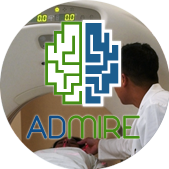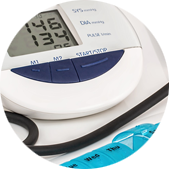-
 HEALTHCARE ENVIRONMENTIn the Healthcare Sector there are many heterogeneous data sources that contain a high volume of information related to patients, illnesses and healthcare centres.
HEALTHCARE ENVIRONMENTIn the Healthcare Sector there are many heterogeneous data sources that contain a high volume of information related to patients, illnesses and healthcare centres.
Big Data in Healthcare
In the Healthcare Sector there are many heterogeneous data sources that contain a high volume of information related to patients, illnesses and healthcare centres. If all this information was thoroughly analysed, it would be very useful for healthcare professionals.
Data about healthcare may be obtained from electronic medical histories, telemedicine devices, clinical tests, or even from wearables. Likewise, it would be possible to get valuable information from epidemiological, nutritional and genomic data, more closely related to what we know as Real World Data (RWD) and Personalized Medicine. Analysing this information may help doctors and healthcare centres to make decisions, resulting in a better healthcare service for patients.
Applying the so-called Big Data techniques provides an intelligent layer where it is particularly relevant to apply predictive models that help anticipate healthcare needs and offer a more effective medical attention.
At IIC we apply our own techniques to analyse information and optimize both healthcare management (to predict how to use healthcare resources more efficiently: frequency of attendance at General Practice (GP), hospital admissions, etc.) and patient care (providing personalized medicine with support). We offer alert services, prediction of needs and a recommendations service, among others.
Intelligent Alerts Systems
SNA (Social Network Analysis) reports integrated in our intelligent alerts systems DIGNA and ADMIRE provide useful information to support medical specialists in developing protocols, early diagnosis, prognosis of the evolution of diseases, and planning of treatments for their patients.
Segmentation of Chronic Patients. Prediction of Needs
We develop systems to stratify population into different risk categories for early detection of patients that would not need to be referred to medical specialists, emergencies or to a hospital if they were proactively controlled at Primary Care Centres.
Categorising people according to risks allows healthcare centres to increase strategic decision making. Likewise, predicting hospital readmissions, healthcare costs —for individuals or according to chronic conditions—, etc. involves a significant economic impact on healthcare institutions.
Analysis of Frequent Attenders in Primary Care
The Spanish Society of Primary Care Doctors (SEMERGEN) defines “frequent attenders” as patients who attend the General Practitioner consultation 12 times a year or more. However accurate this definition might be, it lacks something. It would be necessary to obtain behaviour patterns from patients and determine the profiles that actually correspond to frequent attenders.
We worked in close collaboration with Instituto de Salud Carlos III (ISCIII) to detect frequent attenders in Primary Care Centres from a specific Healthcare area.
Optimization of Resources for Care Services
The factors related to use and demand of different care services can be analysed. This allows segmenting population in groups sharing social and healthcare characteristics and specific risk levels to provide the most suitable services and resources according to the real needs from patients.
Collaborations and associations
We have collaborated with major research institutions such as Fundación CIEN (Research Centre of Neurological Diseases), Fundación Reina Sofía, Universidad Rey Juan Carlos, Fundación DIM (for the Development of Advanced Medical Images), Instituto de Salud Carlos III, or UCLA (University of California, Los Angeles).
Besides, we are members of several key institutions of the medical technology area, such as ITEMAS Network (Innovation on Biomedicine Technologies) or FENIN (Spanish Federation of Healthcare Technology Enterprises).





